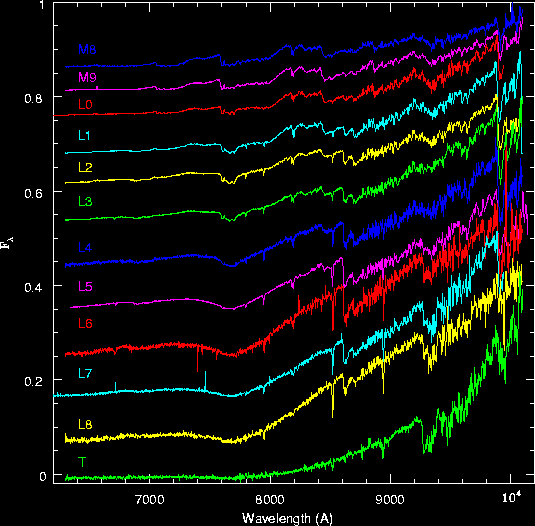 NStars 1: Photometric surveys --- | ---
NStars 2: proper motion stars
NStars 1: Photometric surveys --- | ---
NStars 2: proper motion stars

 NStars 1: Photometric surveys --- | ---
NStars 2: proper motion stars
NStars 1: Photometric surveys --- | ---
NStars 2: proper motion stars




Photometric searches (II): 2MASS near-infrared data and optical counterparts
3. The `Static' M-dwarf sample: Optical Detections and Near-infrared Photometric
Selection
The M dwarf sample described in the previous section includes nearby stars with proper motions that are sufficient to produce a >6 arcsecond offset between the 2MASS and USNOA positions. However, a subset of the nearby M dwarfs should have low tangential velocities with respect to the Sun, and at least the brighter of those stars should have optical data in the 2MASS catalogue. (Since USNOA requires detection on both blue and red plates, faint red stars will lack such data - although the overwhelming majority of those stars should be picked up in the ultracool 2MASS-only search outlined in section 1). These low proper-motion stars probably contribute most of the stars missing from catalogues of the immediate Solar Neighbourhood. However, the number of such stars is likely to be relatively small, at least for distances as small as 10 parsecs where a tangential velocity of only 10 km/sec permits entry in the NLTT survey. Nonetheless, hordes of such low space-motion stars have been postulated periodically (notably in the late-60s and early-70s) as a `solution' for the local dark matter problem (which probably isn't a problem any more).
We should be able to identify nearby late-type dwarfs with low space motions using purely photometric methods. Those stars have the same absolute magnitude/colour distribution as the M dwarfs identified in section 2, and can be identified using a simple modification of the search technique:
This sample still has to be constructed from the 2MASS catalogue.
 NStars Photometric
surveys index
NStars Photometric
surveys index
